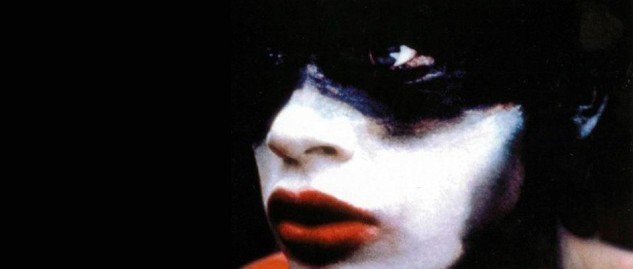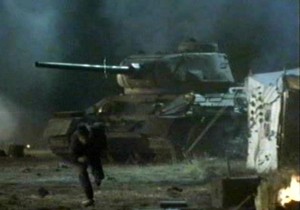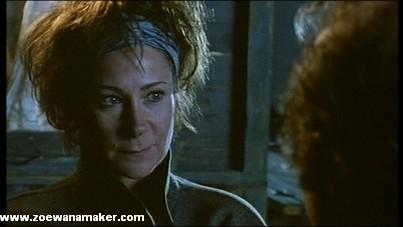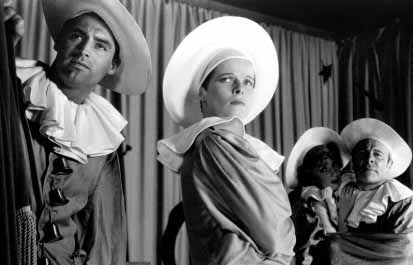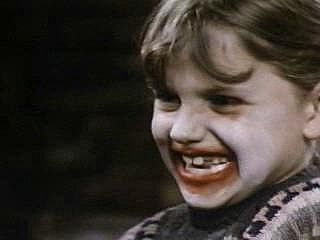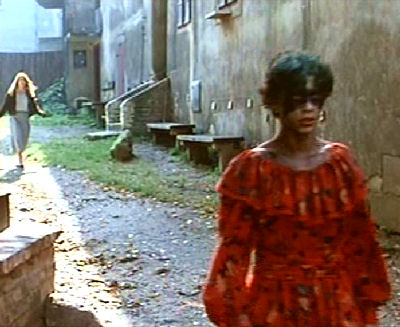From the Chicago Reader (September 7, 1990). — J.R.
THE RAGGEDY RAWNEY
*** ( A must-see)
Directed by Bob Hoskins
Written by Hoskins and Nicole De Wilde
With Dexter Fletcher, Hoskins, Zoe Nathenson, Dave Hill, Ian Dury, and Zoe Wanamaker.
An offbeat and highly original English film that’s been very slow making the rounds — Bob Hoskins’s The Raggedy Rawney (1987) — may be in trouble commercially. It didn’t even show in England until about two years after its completion, and it took an additional year to reach Chicago. Now that it’s here, it has at least five serious handicaps:
(1) At first glance, hardly anyone has any idea what the title means. (“Rawney,” a rather specialized word not found in most dictionaries, roughly means “magical madwoman.”)
(2) As an actor, Hoskins is basically known for his roles in contemporary settings, usually within a noir context — either as a gangster (as in The Long Good Friday and Mona Lisa) or as a detective (as in Who Framed Roger Rabbit). His part in The Raggedy Rawney, as a sort of gypsy leader, plays off neither of these associations, nor is it the lead role.
(3) Inspired by a legend told to Hoskins as a child by his grandmother that reportedly can be traced all the way back to the Hundred Years’ War (1337-1443), the movie is nonetheless given a setting so vaguely defined that the best description I’ve seen yet (published in the synopsis in Monthly Film Bulletin) is: “Sometime during the first half of the 20th century, in a European country at war.” On the other hand, if it were set during the Hundred Years’ War, that probably wouldn’t have helped; the best film that comes to mind that dealt with that war — John Huston’s A Walk With Love and Death (1969), starring his daughter Angelica in her first major role — was possibly the biggest flop of his career, and it’s virtually impossible to see nowadays.
(4) Clearly conceived of in part as an antiwar statement, Hoskins’s film is currently playing in a somewhat war-happy country that happens to be gearing up for a brand-new war — a country, moreover, where gung-ho military celebrations are conceived as commercial entertainments and antiwar movies are perceived as propagandistic, old-hat, and decidedly unhip sermons. (“Preaching to the converted” is a typical reviewer’s indictment of the latter. Akira Kurosawa’s Dreams is another casualty of this climate; its antiwar message can’t possibly approach the appeal of the same director’s war pictures, like Kagemusha. At the same time, however, it should be acknowledged that this apparent war fever may be only temporary; as a recent Nation editorial astutely put it, “Like many of Hollywood’s disappointing summer blockbusters that started out big but shriveled after a few weeks, Bush’s new war may not have legs.”)
(5) Not belonging to any recognized or recognizable genre, although it intermittently suggests several — western, war picture, love story, bucolic comedy, medieval romance, fantasy, allegory, and parable — The Raggedy Rawney can’t claim any secure marketing label.
The plot centers on Tom (Dexter Fletcher), a very young soldier who injures an officer (Gawn Grainger) then deserts his camp after an enemy attack. Stumbling through the bushes in a daze, he is discovered by a girl, Jessie (Zoe Nathenson), who’s traveling with a band of wanderers led by Darky (Hoskins). Jessie spends the night with Tom, but in the morning she and her nomadic tribe move on. He next encounters an insane little girl who proceeds to smear him with makeup and dress him up as a woman. Discovering the corpses of the girl’s family, apparently massacred for sheltering a deserter, Tom takes off. He runs into Darky, who’s fishing in a stream, and matter-of-factly shows him where to catch the most fish.
Tom is taken by Darky’s tribe for a “rawney” who can predict the future, and he and the gypsies flee from the advancing soldiers. (In general the soldiers and their unexplained war are regarded by the gypsies — and indeed by the film itself — as a meaningless plague that must be avoided.) They eventually strike a deal with an isolated farmer, helping him fix his dilapidated farm in exchange for letting them camp nearby. Jessie, the only one who knows Tom’s true gender and identity, becomes his lover, and the rawney is gradually accepted into the tribe.
From the opening shot — an extended camera movement that makes the rounds of an army camp at night, while Tom, a fresh recruit, is being advised by an older and more experienced soldier — Hoskins’s feeling for the camera as something more than a passive recording device, as a tool for exploration and potential discovery, is fully apparent. It’s not the sort of style that one would generally expect from an actor who you’d guess would proceed as if the camera’s main function were either to register performances neutrally or to make independent comments of its own. (Jack Nicholson uses the camera in The Two Jakes to serve both of these functions, and it’s one of his major weaknesses as a director that he tends to regard the camera in this either/or fashion; he’s functioning either as an actor or as a director, seldom as both at the same time.)
Hoskins shows right away that he can direct actors with sensitivity; he’s particularly adept with ensemble playing, and generously modulates his own performance so that it never detracts from the efforts of his fellow actors. (His own character, moreover, never functions as a sage or a spokesman for the film as a whole.) His camerawork shows a certain intelligence and curiosity that neither avoids unorthodox angles nor seeks them out for their own sake. The film was shot in Czechoslovakia and is especially alert to the beauty of the rural landscapes, but the use of the camera always seems fully integrated with the story being told. If the camera assumes an unusually low position in the midst of a gypsy folk dance or lingers over the shimmering dance of bright light on dark water, the reasons in both cases are dramatic, not simply pictorial; in effect, particular discoveries are being made about this world, which we’re invited to share and explore.

As in George Cukor’s magical and equally hard-to-categorize Sylvia Scarlett (1935) — whose picaresque construction and shifting moods and perspectives are occasionally evoked here — ambiguities about genre and gender go hand in hand, unbalancing one another in a sustained tightrope walk. Dexter Fletcher is a rather androgynous actor, with thick, sensual lips resembling Mick Jagger’s, and his impersonation of a rawney is made all the more ambiguous by the fact that we hardly know the character of Tom at all when he takes on this disguise. Is his sustained drag act a pure gesture of concealment or a movement toward self-discovery? (When, to Jessie’s consternation, he starts flirting with some of the male gypsies, his motivations are left somewhat open.) And regarding his alleged psychic powers, which suggest a certain kinship with fish and horses, we’re never completely sure how much he’s pretending and how much — to paraphrase Kurt Vonnegut Jr. in Mother Night — he’s becoming what he’s pretending to be.
The same lack of definition extends to other elements in the plot — not only uncertainties about nationality and period, but uncertainties about the ethnic identities of the gypsies themselves. (As critic Kim Newman points out, neither their language nor their costumes mark them as actual Gypsies. A good many of them are cripples or freaks, and it might be argued that what really binds them is their inability or refusal to participate in the endless war.) The movie makes extensive use of apparently folkloric material — songs, dances, and seasonal rituals — but whether these are completely invented or at least partially authentic remains unclear, at least to me.
Finally, the absence of any fixed genre means that we have to either suspend or continually readjust many of our expectations while we’re watching the film — and that we can never easily anticipate what’s coming next because we have no tradition or context to refer back to. The characters and the world that they inhabit grow before our eyes and take on an increasing familiarity and complexity, but the absence of the usual comforting definitions also allows them to retain their mystery. We usually depend on an elaborate system of narrative anchors to guide us through a movie plot, and Hoskins is no different from other filmmakers when it comes to providing us with people, places, and a history; it is only when we ask for the precise intersections between our own history and that of the characters that the film remains cryptic and silent. It’s a kind of mystery that I respect and value, because it assumes the existence of a kind of parallel universe and invites the audience to discover their own points of entry.

